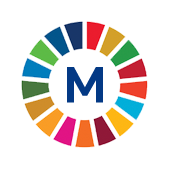 9.c.1 Proportion of population covered by a mobile network, by technologyMetadataPeriod: AnnualYear: 2025 |
 9.c.1 Proportion of population covered by a mobile network, by technologyMetadataPeriod: AnnualYear: 2025 |
| METADATA |
| Indicator information |
| Definition and methodology |
| Data source type and data collection method |
| Notes |
| ID of global indicator |
| Metadata update |
| Global metadata |
| Indicator information | Top |
| Indicator | |
9.c.1 Proportion of population covered by a mobile network, by technology | |
| Global indicator name | |
9.c.1 Proportion of population covered by a mobile network, by technology | |
| Target | |
9.c Significantly increase access to information and communications technology and strive to provide universal and affordable access to the Internet in least developed countries by 2020 | |
| Goal | |
Goal 9. Build resilient infrastructure, promote inclusive and sustainable industrialization and foster innovation | |
| Definition and methodology | Top |
| Definition | |
The Regulatory Authority for Electronic Communications and Postal Services (RATEL) collects and processes data provided by operators of electronic communications networks and services.
Data on the coverage of the population by mobile network signal by technology (2G, 3G and 4G) are presented, which were obtained as the percentage of inhabitants living in the territory covered by the signal of a specific mobile network, regardless of whether or not they are subscribers to any of these networks. | |
| Methodological explanations | |
2G population coverage refers to the population that has access to, or is within range of, a 2G mobile-cellular signal, irrespective of whether they are subscribers or not. This includes mobile-cellular technologies such as GPRS, CDMA2000 1x and most EDGE implementations. It is calculated by dividing the number of inhabitants that are covered by at least a 2G mobile-cellular signal by the total population and multiplying by 100. The indicator refers to the theoretical ability of the population to use non-broadband speed mobile data services, rather than the number of active users of such services.
3G population coverage refers to the population that has access to, or is within range of, a 3G mobile-cellular signal, irrespective of whether they are subscribers or not. This includes mobile-cellular technologies such as HSPA, UMTS and EV-DO. It is calculated by dividing the number of inhabitants covered by at least a 3G mobile-cellular signal by the total population and multiplying by 100. It excludes the population covered only by GPRS, EDGE or CDMA 1xRTT.
4G population coverage refers to the population that has access to, or is within range of, a 4G mobile-cellular signal, irrespective of whether they are subscribers or not. This includes mobile technologies such as LTE/LTE-Advanced, mobile WiMAX/WirelessMAN or other more advanced mobile-cellular networks. It is calculated by dividing the number of inhabitants covered by at least a 4G mobile-cellular signal by the total population and multiplying by 100. It excludes the population covered only by HSPA, UMTS, EV-DO and previous 3G technologies, and also excludes fixed WiMAX coverage. | |
| Method of calculation | |
Based on certain sets of network architecture data obtained from operators, RATEL calculates the population coverage by mobile network signal by technology (2G, 3G and 4G) using its own prediction tool and optimized prediction model, taking into account the population coverage in the territory covered by the network of a certain technology of at least one operator. | |
| Unit of measure | |
% | |
| Available disaggregation | |
Mobile network | |
| Territorial level | |
Republic of Serbia | |
| Data source type and data collection method | Top |
| Data source | |
RATEL - Regulatory Authority for Electronic Communications and Postal Services | |
| Periodicity of data collection | |
Annual | |
| Notes | Top |
| ID of global indicator | Top |
C090c01 | |
| Metadata update | Top |
| 26/6/2025 | |
| Global metadata | Top |
https://unstats.un.org/sdgs/metadata/files/Metadata-09-0C-01.pdf | |